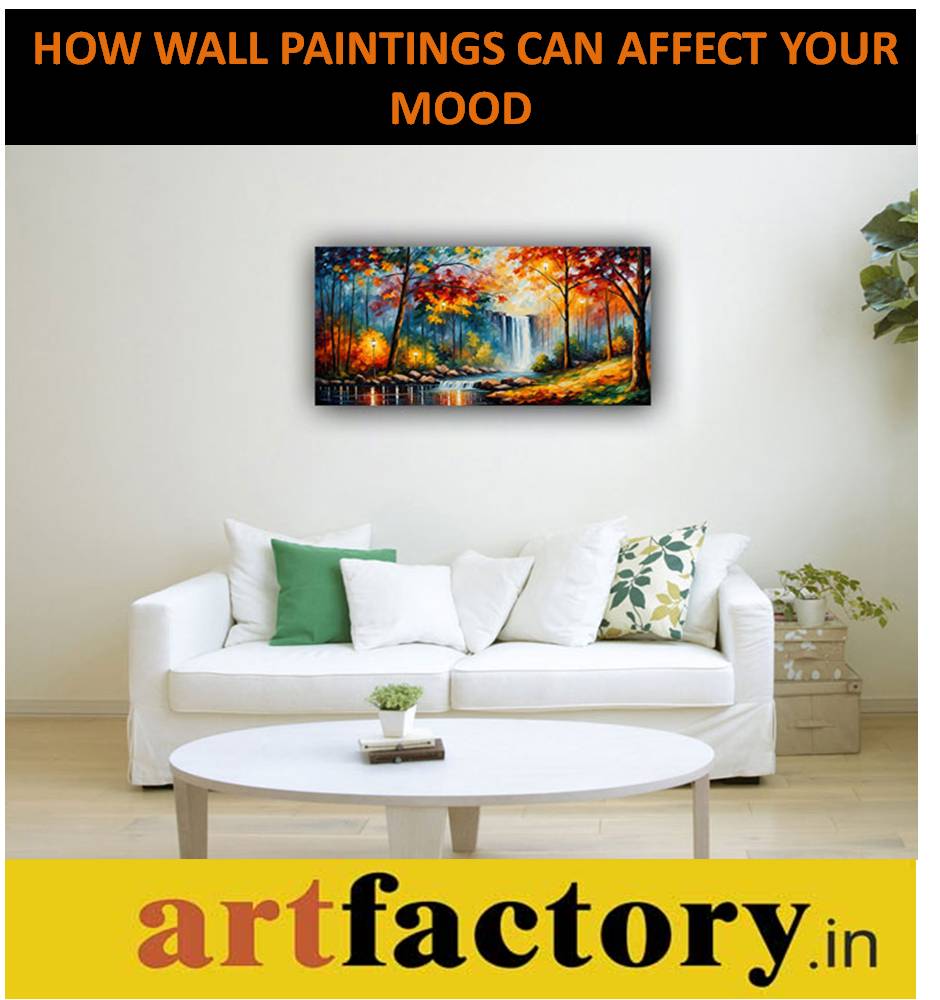
The Psychological Impact of Paintings: How wall paintings can affect your mood
Paintings have always been more than just decorative objects. They evoke emotions, stir memories, and have a profound psychological impact on viewers. Whether it's a serene landscape, a vibrant abstract, or a meticulously detailed still life, art influences our thoughts, feelings, and mental states in powerful ways. Here's how different types of paintings affect us psychologically:
Color Psychology: Colors in paintings have a direct impact on mood and emotions. For example:
- Blue promotes calmness, peace, and stability.
- Red stimulates energy, passion, and excitement.
- Green evokes balance, harmony, and rejuvenation.
- Yellow brings feelings of happiness, positivity, and warmth.
Abstract Art: Abstract paintings allow viewers to interpret meaning in their own way, which can stimulate creativity and personal reflection. They often evoke curiosity and challenge conventional thinking, leading to a more flexible mindset.
Nature Paintings: Landscapes, forests, and water elements can provide a sense of tranquility, reduce stress, and promote mental relaxation. Studies have shown that nature-themed art can enhance feelings of well-being and help in healing.
Symbolism and Cultural Art: Paintings with deep symbolic or cultural meaning, like religious or traditional art, can evoke feelings of connection, spirituality, and identity. They often trigger introspection and provide psychological comfort or motivation.
Portraits: Paintings of faces can elicit empathy, nostalgia, and emotional engagement. Looking at human expressions in portraits can provoke strong emotional reactions, such as empathy or inspiration.
Still Life and Minimalist Art: These styles promote mindfulness and focus, encouraging the viewer to pay attention to details and find beauty in simplicity. They can have a calming effect, enhancing concentration and mental clarity.
Surrealism: Surrealist paintings can challenge reality and encourage the mind to explore the subconscious. They provoke thought and imagination, sometimes unsettling but often freeing the mind from conventional boundaries.
Conclusion
The psychological impact of paintings goes beyond the surface. Whether invoking deep emotions, stimulating cognitive processes, or promoting healing, art profoundly affects the human psyche. Paintings offer more than visual pleasure; they shape moods, enhance mindfulness, evoke emotional responses, and stimulate reflection. Whether you choose art for personal introspection, mental well-being, or simply to beautify your space, the connection between paintings and psychology is undeniable.
By understanding this impact, we can consciously choose artwork that resonates with our emotional needs and enhances our psychological health, making paintings not just an aesthetic choice, but a psychological tool for well-being.
Questions & Answers :
What is the psychological impact of paintings?
Paintings influence emotions, thoughts, and behaviors by engaging the mind through color, symbolism, and subject matter. They can evoke calmness, creativity, or stress relief.How do colors in paintings affect mood?
Colors like blue induce calmness, red stimulates energy, green promotes balance, and yellow enhances positivity.What are the benefits of nature paintings?
Nature paintings reduce stress, promote relaxation, and enhance overall well-being by bringing a sense of tranquility and harmony.How do abstract paintings influence the mind?
Abstract paintings encourage creativity and personal interpretation, stimulating open-mindedness and flexibility in thought.Why are portrait paintings impactful?
Portraits evoke empathy and emotional engagement, allowing viewers to connect with human expressions and stories.What is the effect of surrealist art on the psyche?
Surrealist art challenges reality, stimulating imagination and subconscious exploration, which can be both unsettling and freeing.How do spiritual paintings help mental health?
Spiritual and meditative art, like mandalas, promote inner peace, reduce anxiety, and encourage mindfulness and balance.

Comments : (0)